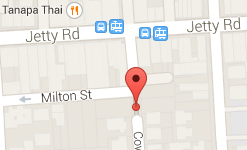No Orthotics
Foot Mobilisation Therapy does not use orthotics. Instead, the practitioners at the Foot & Leg Centre rely on your body to naturally repair and restore itself with the assistance of our techniques.We often see clients who are frustrated at the short-term results of orthotics and are seeking long-term outcomes to improve their pain and quality of life.
There is no denying that orthotics – a Greek work meaning to make straight – is effective and does achieve its primary goal of improving the mechanical relationship between bones. So, why then, does the Foot & Leg Centre not use it?
Because orthotics results are only experienced while the person is using the device. There is no long lasting impact. This is why we prefer to use alternative methods to orthotics. We go right to the root cause of your problem and want to gain a full understanding of you and your disorder.
Before Treatment
After Treatment
Above: the images above demonstrate pre- and post- treatment results of foot mobilisation therapy and corrective exercise. It must be noted that no client is the same and results of the therapy will differ among clients. These images are not meant to provide a guarantee that this will be the results in each case.
One of the features of orthotics is that there is some type of joint or muscle support being provided by a device to the client. In doing so, those muscles that are supported are not able to get stronger on their own. Slowly over time they begin to get weaker. There is some conjecture about whether orthotics makes muscles weaker or stronger.
In many cases, the case for weaker is supported bypodiatristswho employ orthotics. Over time, they need to increase the level of control to achieve the same outcomes. Much like people who wear reading glasses and need stronger lenses over time to see, the glasses are not actually fixing the cause of the problem.
For this reason, the Foot & Leg Centre does not use orthotics. We use Foot Mobilisation Therapy, combined with Corrective Exercise, to promote strength and stability in the muscles and joints.
Despite this, there are always some cases where it is necessary to use orthotics, including:
- Joint stability is the only course of action. For example, where joints are hypermobile and orthotics are required for stability.
- Joint fusion has occurred between the bones and no amount of joint mobilisation will restore mobility.
- Different leg lengths typically require orthotics.
- If corrective care cannot be undertaken due to the client’s condition, orthotics is a potential option.
Watch us on Today Tonight 












